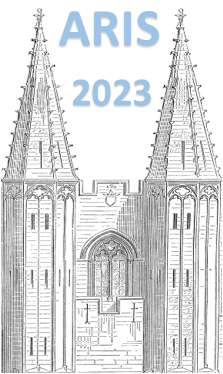Orateur
Description
High-resolution laser spectroscopy has been proven to be a powerful tool to extract nuclear structure data in an nuclear-model-independent manner. The isotope shift which can be extracted from the hyperfine spectra gives direct access to changes in mean-square charge radii, while the extracted hyperfine parameters give access to the nuclear spin, nuclear magnetic dipole moment and electric quadrupole moment. All this provides information on e.g. deformation and shape coexistence, proton-neutron pairing correlations, evolution of nuclear shells and the presence of shell closures. In recent years, measurements of nuclear ground state properties have also been proven exceptionally potent in testing state-of-the-art nuclear Density Functional Theory (DFT) and ab-initio approaches.
The Pd isotopes are located in a transitional area in between chains which display smooth parabolic trends in the changes in mean-square charge radii (Sn, In, Cd and Ag), and a region where the changes in mean-square charge radii and corresponding electric quadrupole moments show evidence of a dramatic shape change at N=60, maximized and centred around the yttrium system. In the transitional area between both regions however, i.e. the Tc, Ru, Rh and Pd isotopes, no optical spectroscopic information has been available for radioactive nuclei so far. This is in part due to the refractory character of these nuclei, which makes their production challenging for many facilities, but also due to their complex atomic structure.
At the IGISOL facility, these difficulties were overcome thanks to the chemically insensitive production method, and the installation of a charge-exchange cell and addition of a cw Ti:sapphire laser. Collinear laser spectroscopy was performed on unstable Pd isotopes, which are known to be deformed from decay spectroscopy studies, although there is disagreement on the origin and character of the (possible) change in deformation. The measured nuclear charge radii [1], spins and nuclear moments [2] will be presented in this contribution, and the implication on the deformation/shape of the isotopes will be discussed. In addition, the results will be compared to state-of-the-art DFT calculations using Fayans Energy Density Functionals (EDFs), and using Gogny EDF including beyond mean-field calculations within the Symmetry Conserving Configuration Mixing (SCCM) framework. As all recent benchmarks of nuclear DFT were performed on spherical systems, close to (doubly-)magic systems, this presents the first test of the performance of the Fayans functionals for well-deformed isotopes.
[1] S. Geldhof et al., Phys. Rev. Lett. 128, 152501 (2022).
[2] A. Ortiz-Cortes et al., to be submitted.

